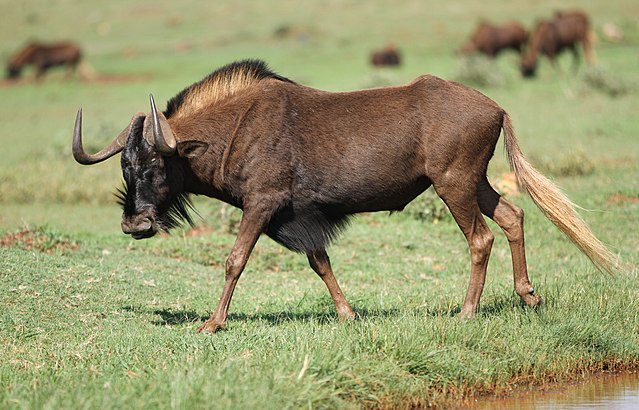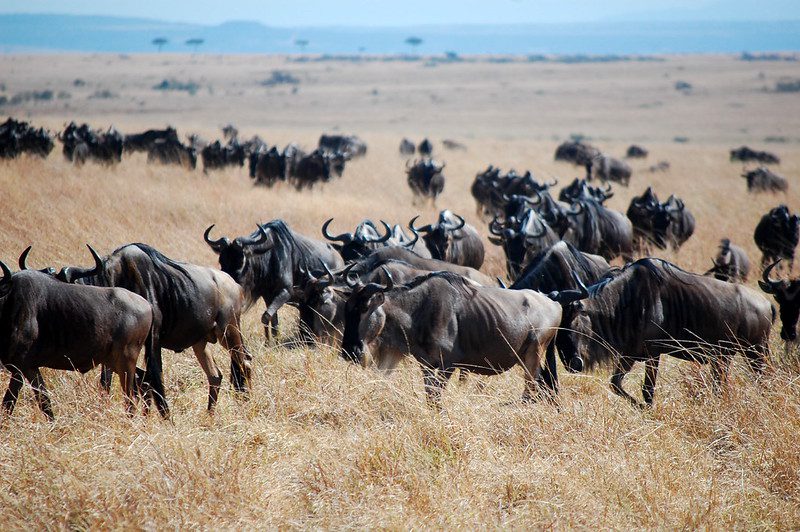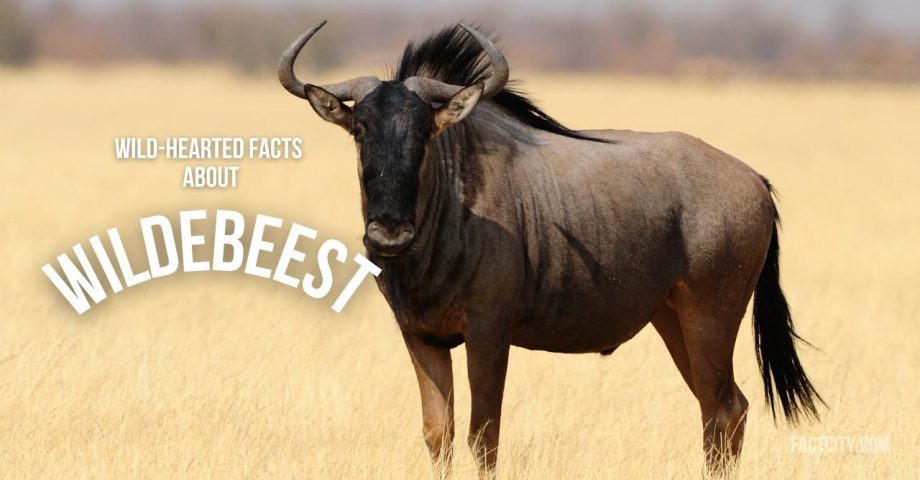10 Wild-hearted Facts about Wildebeest
Wildebeest are stunning bovine creatures that we often link to African safaris, mainly because they’re native to the Eastern and Southern ends of the continent. However, they tend to migrate pretty wildly across vast expanses! Let’s take a look at some fun facts about wildebeest to clue you in on these traveling beasts.
1. Wildebeest are Bovidae, meaning they’re related to cows.
Wildebeest belong to the genus Connochaetes. They are also part of the Bovidae family, which includes antelopes, cattle, and goats.
2. There are two types of wildebeest.
Across Africa, you’ll spot the blue wildebeest (Connochaetes taurinus) and the black wildebeest (Connochaetes gnou). The blue wildebeest is the most common and widely distributed of the two species, found in several African countries, including Kenya, Tanzania, Botswana, and South Africa.
3. Wildebeest migration takes them toward water and across hundreds of miles.
Although we mostly attribute migration to birds, wildebeest migrate, too! Several times a year, millions of wildebeest move in search of fresh grazing areas and water sources. Their migration is considered one of the greatest wildlife spectacles on Earth – during the migration, wildebeest often cover more than 1,000 miles (1,609 km) in search of food and water!

4. Wildebeest will move with the seasons, too.
Seasonal changes in rainfall patterns drive the wildebeest migration. It typically occurs between the Serengeti in Tanzania and the Maasai Mara in Kenya. They tend to migrate in a “loop”, meaning their movements are somewhat easy to predict (though we’d still recommend you get out of their way!).
5. Wildebeest are broad with large horns (and it’s the same for males and females).
Wildebeest are easy to recognize thanks to their distinctive appearance. They have a large, robust body, a broad head, and curved, backward-sloping horns. In fact, both male and female wildebeest have horns, but the males’ horns are usually larger and more robust.
6. Wildebeest don’t eat any meat.
Wildebeest are primarily herbivores. This means that they feed on grasses and occasionally leaves and other vegetation. They use their large, broad mouths to clip grass quickly and efficiently.
7. Large predators prey on wildebeest during their migrations.
As big as wildebeest are, they are prey for many animals in their areas. Predators, such as lions, hyenas, and crocodiles, pose significant threats to wildebeest, especially during river crossings on their migration routes.
8. Wildebeest are impressively large, but at the same time, seriously fast!
Wildebeest typically escape their predators through sheer speed. They have adapted to be able to run at high speeds, reaching up to 50 miles per hour (80 km/h)! That’s roughly the top speed of a lion, so the chase really is on.

A group of wildebeest are called “a confusion”
9. They do synchronized labor.
During the wildebeest migration, females give birth to their calves in a synchronized manner, meaning gestations will cross over. This mass calving provides protection in numbers for the vulnerable young.
10. They are prone to pronking!
Wildebeest have a unique behavior called “pronking” or “stotting.” When excited or alarmed, they leap into the air with all four legs stiff and straight. This behavior may signal to predators that they are fit and not worth pursuing.

A blue wildebeest
FAQs about Wildebeest
What are wildebeest famous for?
Wildebeest are particularly well-known for their astonishing migration patterns. They are also known for living in large herds and being common prey for multiple predators in Africa, despite the fact they can reach a speedy gallop to compete with most lions.
Why are wildebeest called wildebeest?
It is believed that wildebeest gained their unique name because they look like wild cattle! People often used to call them 'wild ox' and, of course, 'wildebeest'. The term is thought to have originated from Dutch settlers around the 1700s. Given they're related to cattle, the name isn't too far off the mark.
What is a group of wildebeest called?
Although you could simply say “a group of wildebeest”, the correct term to use would be a confusion. And, since wildebeest tend to live in big herds, you could say they live in mass confusion!
Further reading:
https://factcity.com/tag/Animals
https://www.awf.org/wildlife-conservation/wildebeest
https://www.nationalgeographic.org/media/wildebeest-migration/
Do you know any fun facts about wildebeest? Share them in the comments below!
This page was last modified on August 15, 2023. Suggest an edit









